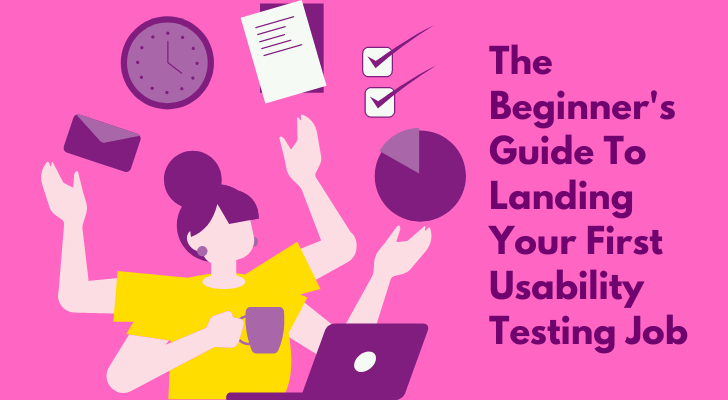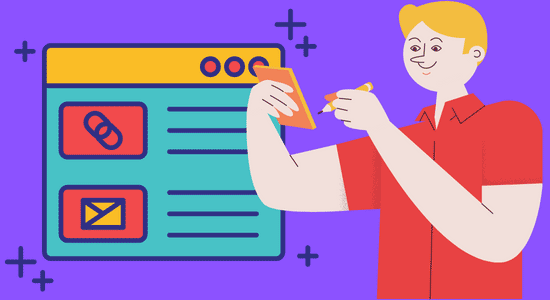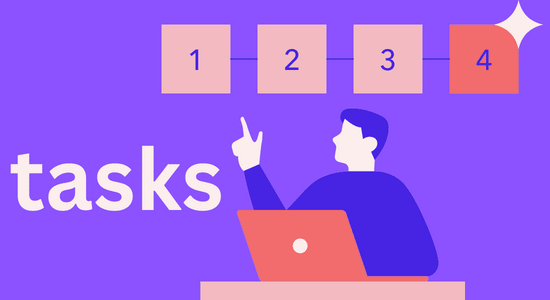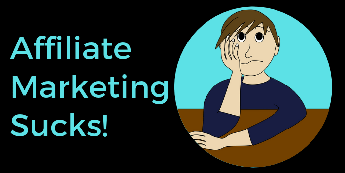Usability testing is an important part of the user experience design process. It helps developers and designers see how users interact with their product or website, so they can make informed decisions about changes that need to be made to improve the user experience.
As a usability tester, you have the opportunity to provide valuable insight into what works and what doesn't, while also earning some extra income. But if you're just starting out as a usability tester, it can be hard to know where to begin. This guide will walk you through all the steps needed to get started in usability testing, from finding jobs to preparing for interviews. Read on to learn more and become a usability testing master.

What Is Usability Testing?
Usability testing is a method of evaluating a product by testing it with representative users. The researchers observe users as they use the product to complete tasks and identify any problems they encounter. The testing helps developers to identify potential problems with their product before it goes to market. By conducting usability tests early and often, designers and developers can save time and money by fixing problems before they become too expensive to fix.
The job is basically to ensure that products are usable and user-friendly. Methods of usability testing include
- Technical testing
- Interviews
- Focus groups
- Surveys
- Heuristic evaluations
- Comparative evaluations
Testing results can be reported on paper prototypes or live websites and applications.
Why Testers In Demand
No matter how product owners or developers think the finished products are perfect, there are always some blind spots. So it’s a tester’s job to find faults from different perspectives.
Improves user experience:
One of the main goals of usability testing is to improve the user experience. By conducting regular usability tests and making changes based on feedback, companies can ensure that their products are as user-friendly as possible.
Identifies areas for improvement:
Usability testing also allows companies to identify areas where their products need improvement. This information can then be used to make necessary changes and enhancements.
Saves time and money:
In many cases, usability testing can save companies time and money by identifying problems early on in the development process. This way, the problems can be fixed before they become too costly or time-consuming to fix.
Boosts sales and conversion rates:
Ultimately, improving the user experience of a product will lead to increased sales and conversion rates. Usability testing is one way to help achieve this goal.
What Tasks Do Users Need To Be Able To Complete?
Users need to be able to complete a variety of tasks in order for an application or website to be successful. These tasks range from simple actions to more complex activities.
Simple ones include;
- Logging into the platform
- Navigating through menus and pages
- Viewing content
- Performing basic searches.
Whereas more complex activities include:
- Creating accounts and profiles
- Uploading files and data
- Making payments or purchases online
- Participating in interactive forums or communities
- Filling out forms with accurate information
- Making decisions based on user feedback, reviews, ratings, etc.
- Providing feedback on products they have used (e.g. submitting reviews)
- Setting up notifications so that they are alerted when new content is available relevant to interests they have expressed etc.

The Skills You Need To Be A Usability Tester
Here are the key skills you need to be a successful usability tester.
- Be able to articulate your thoughts and observations clearly and concisely.
- Have strong attention to detail, as even the smallest of details can make a big difference in the user experience.
- Think creatively and come up with new ways to solve problems.
If you have these skills, then you’re well on your way to becoming a great usability tester.
Things That You Should Focus On as a Usability Tester
Here are some of the things that you need to focus on when you become a product/service tester.
“How easy is it for users to find the information they need?”
Finding the information users need can be a challenge, especially if you don't know exactly what they're looking for. For website usability;
- Websites should provide clear navigation menus that allow users to quickly find the relevant content or pages on their site.
- Search boxes can help them narrow down results and locate specific topics or items more easily.
- Readability affects how quickly they can find the information they're looking for. Long paragraphs with no image aren’t easy for the eyes.
“Do users encounter any errors or roadblocks along the way?”
Errors caused by technical issues such as bugs in the code prevent a feature from functioning correctly and can lead to frustration for the user. When there is no clear path forward for the user to take - there isn’t an obvious solution available - it’s extremely frustrating. It’s a tester’s job to ensure products are designed in a way that these types of problems are minimized so the user experience is smooth and enjoyable.
“How do users feel about using the product? “
When it comes to expressing how you feel about a product, the best way is to be honest. Speak from your heart and provide detailed feedback on why you like or dislike certain aspects of the product.
Be sure to talk about what makes the product unique, any special features that stand out, and whether or not it meets your expectations for quality. Describing how the product has impacted your life in a positive or negative way can also help create an emotional connection with potential customers which helps them decide if they want to buy it or not.
- Users look for a product that offers value in terms of features and benefits that helps them complete tasks.
- A product that has reliable customer support also makes users feel comfortable when using the product, knowing they can get help if needed.
Ultimately, a great user experience with the product should leave customers feeling satisfied and secure with their choice.
“Would they recommend it to others?”
If customers are satisfied with their experience and they see value in what you’re offering, they are more likely to share their positive experiences with others and spread the word on your behalf.
Ask these questions and you can get valuable insights into how usable your product is, and what areas need improvement.
How To Find Usability Testing Jobs
1. Independent Testing Companies
One option is to sign up with a usability testing company. These companies connect businesses that need usability testing services with independent contractors who can provide those services.
Signing up with a company like this usually requires taking a short screening test to ensure that you have the necessary skills and experience. Once you're approved, the company will send you opportunities as they come up that match your profile and availability.
2. Run a Tester Business
Another way is to become a consultant. Possibly, if you become specialized in testing in-cloud products, you will be able to run your tester business from home. You can reach out to businesses directly and offer your services as a consultant.
This route requires a bit more hustle on your part because it requires marketing techniques to convince businesses to want to hire you. But can be very rewarding if you land clients who are happy with your work.
To get started, compile a list of potential clients in your target industry, find what other testers are looking for, and reach out with customized proposals outlining how you can help them improve their user experience.
3. Job Boards
There are also many job boards specializing in UX and usability positions that are worth checking out.
4. Networking
Networking with other professionals in the field is always a helpful way to learn about new opportunities and get your name out there as someone who does great work.

How Much Can You Earn From Usability Testing?
Usability testers can earn a wide range of salaries depending on their experience and location.
If the job is something simple such as app testing, you may not get paid at all, but you'll be given something else instead, such as;
- Free access to the premium version for a year
- Shopping vouchers
- Discount code (up to 100%) for purchasing another product sold by the same company.
But of course, for more complex testing jobs, you will get paid cash.
If you are hired by a particular company, entry-level usability testing positions start at around $20 an hour, while more experienced professionals may be able to make up to $90 an hour. Those with specialized skills or working in major metropolitan areas may also see higher pay rates.
The amount earned by usability testers may vary based on company policies and other factors such as bonuses or incentives for completing tasks quickly and accurately.
Start a Usability Testing Business
Offering a usability testing service through marketplaces such as Fiverr is an excellent way to make money and provide valuable services to companies and individuals.
With the right skill set, you can offer a wide range of usability testing services including;
- Website reviews
- Application reviews
- Cognitive walkthroughs
- User interviews
- A/B testing, etc.
You could even offer consulting services by providing recommendations on how to improve the overall user experience of a product.
You can charge anywhere between $5-$100 depending on the time your testing takes and the level of detail you provide in your report.
By leveraging your expertise in usability testing and offering it through marketplaces like Fiverr, you can help businesses understand how their users interact with products so they can optimize them for better results.
Fiverr Gig Category Examples
Click each category for detailed view
Logo Design
Brand Style Guides
Fonts & Typography
Business Cards & Stationery
Gaming
Game Art
Graphics for Streamers
Twitch Store
Art & Illustration
Illustration
NFT Art
Pattern Design
Portraits & Caricatures
Cartoons & Comics
Tattoo Design
Storyboards
Web & App Design
Website Design
App Design
UX Design
Landing Page Design
Icon Design
Marketing Design
Social Media Design
Email Design
Web Banners
Signage Design
Packaging & Covers
Packaging & Label Design
Book Design
Album Cover Design
Podcast Cover Art
Car Wraps
Visual Design
Photoshop Editing
Presentation Design
Infographic Design
Vector Tracing
Resume Design
Architecture & Building Design
Architecture & Interior Design
Landscape Design
Building Engineering
Building Information Modeling
Fashion & Jewelry
Fashion Design
Jewelry Design
Print Design
T-Shirts & Merchandise
Flyer Design
Brochure Design
Poster Design
Catalog Design
Menu Design
Invitation Design
Product & Characters Design
Industrial & Product Design
Character Modeling
Trade Booth Design
Design Advice
Social Media Marketing
Social Media Advertising
Search Engine Optimization (SEO)
Local SEO
Marketing Strategy
Public Relations
Content Marketing
Video Marketing
Email Marketing
Web Analytics
Text Message Marketing
Crowdfunding
Marketing Advice
Search Engine Marketing (SEM)
Display Advertising
E-Commerce Marketing
Influencer Marketing
Community Management
Mobile App Marketing
Music Promotion
Book & eBook Marketing
Podcast Marketing
Affiliate Marketing
Articles & Blog Posts
Translation
Proofreading & Editing
Resume Writing
Cover Letters
LinkedIn Profiles
Ad Copy
Sales Copy
Social Media Copy
Email Copy
Case Studies
Book & eBook Writing
Book Editing
Scriptwriting
Podcast Writing
Beta Reading
Creative Writing
Brand Voice & Tone
UX Writing
Speechwriting
eLearning Content Development
Technical Writing
Job Descriptions
White Papers
Website Content
Product Descriptions
Press Releases
Business Names & Slogans
Grant Writing
Transcription
Research & Summaries
Writing Advice
Video Editing
Short Video Ads
Whiteboard & Animated Explainers
Character Animation
Lyric & Music Videos
Logo Animation
Intros & Outros
Visual Effects
Subtitles & Captions
Spokesperson Videos
Unboxing Videos
Animated GIFs
3D Product Animation
Social Media Videos
E-Commerce Product Videos
Product Photography
Live Action Explainers
Lottie & Website Animation
NFT Animation
NFT Art
NFT Services
NFT Development
NFT Promotion Checklist
Character Animation
Corporate Videos
App & Website Previews
Animation for Streamers
Slideshow Videos
Crowdfunding Videos
Meditation Videos
Animation for Kids
Article to Video
Game Trailers
Book Trailers
Real Estate Promos
eLearning Video Production
Video Templates Editing
Screencasting Videos
Local Photography
Drone Videography
Video Advice
Voice Over
Producers & Composers
Singers & Vocalists
Mixing & Mastering
Session Musicians
Online Music Lessons
Podcast Editing
Songwriters
Beat Making
Audiobook Production
Audio Ads Production
Sound Design
Jingles & Intros
Audio Editing
Music Transcription
Vocal Tuning
DJ Drops & Tags
DJ Mixing
Remixing & Mashups
Synth Presets
Meditation Music
Audio Logo & Sonic Branding
Music & Audio Advice
WordPress
Website Builders & CMS
Game Development
Development for Streamers
Web Programming
E-Commerce Development
Mobile Apps
Desktop Applications
Chatbots
Support & IT
Online Coding Lessons
Cybersecurity & Data Protection
Get Your Website in a Few Steps
Electronics Engineering
Convert Files
User Testing
QA & Review
Blockchain & Cryptocurrency
NFT Development
Databases
Data Processing
Data Engineering
Data Science
Virtual Assistant
E-Commerce Management
Market Research
Sales
Customer Care
CRM Management
ERP Management
Supply Chain Management
Project Management
Event Management
Game Concept Design
Business Plans
Financial Consulting
Legal Consulting
Business Consulting
Presentations
HR Consulting
Career Counseling
Data Entry
Data Analytics
Data Visualization
Online Tutoring
Gaming
Astrology & Psychics
Modeling & Acting
Wellness
Traveling
Fitness Lessons
Dance Lessons
Life Coaching
Greeting Cards & Videos
Personal Stylists
Cooking Lessons
Craft Lessons
Arts & Crafts
Family & Genealogy
Collectibles
How To Prepare For A Usability Testing Job
Before you can land a usability testing job, you need to prepare for it. Here are some tips to help you get started:
1 Familiarize yourself with the basics of usability testing.
If you're not already familiar with the concept, take some time to read up on it. There are plenty of resources available online, including our own beginner's guide to usability testing.
2 Identify your target companies.
Once you know what usability testing is and how it's used, identify companies that are likely to have openings for testers. These can be companies that produce software or websites, or that offer services that require user feedback (such as online courses).
3 Research the companies' hiring processes.
Each company has its own process for hiring usability testers, so research each one before applying. This way, you'll know what to expect and can be sure to put your best foot forward.
4 Prepare a portfolio of your work.
Many companies will want to see examples of your work before considering you for a job, so be sure to put together a strong portfolio. Include any relevant projects you've worked on, whether they're from school or previous jobs.
If you don't have any direct experience with usability testing, consider including projects where you demonstrated excellent attention to detail or provided valuable feedback to users.
5 Practice your interviewing skills.
Usability testing jobs often involve interviewing users about their experiences with a product, so it's important to practice your interviewing skills. Consider roleplaying with a friend or family member, and make sure you're comfortable talking about the topics you'll be discussing in the interview.
6 Stay up to date on industry trends.
Companies value employees who stay up to date on the latest trends in their field, so make sure you're reading industry news and keeping an eye out for new developments. This will also help you stay on top of changes in the usability testing world and ensure that your skills remain relevant.

What To Expect During A Usability Testing Job
Here's a rundown of what you can expect during a typical usability testing job:
You may meet with the client or project manager to discuss the project. They'll give you an overview of the product that you'll be testing and what they're hoping to learn from the usability tests.
You'll be given a set of tasks to complete while using the product or website. These tasks will be designed to test specific areas of the user experience.
For example, you might be asked to find a particular piece of information on a website, or test how easy it is to complete a purchase on an e-commerce site.
As you complete the tasks, you'll be asked to think aloud and share your thoughts and observations with the client. They'll be interested in hearing about anything that was confusing, frustrating, or difficult for you.
At the end of the job, you'll debrief with the client and give them your overall impressions of the user experience. Your feedback will help them improve their product or website and make it more user-friendly for future visitors.

Affiliate Marketing Sucks!
9 reasons that you don't want to be involved with affiliate marketing - sad, depressing, expensive, and the people...!

Jobs For Aspergers Syndrome
Don't you tell me I can only work in a factory because I can't communicate. I'm an excellent communicator!
Get The Most Out Of Your Usability Testing Job
Here are a few tips for getting the most out of your usability testing job:
1. Willing To Understand
Before you start your usability testing job, it is important to be prepared. This means having a good understanding of the product that you will be testing, as well as the target audience. Have a clear idea of what you hope to achieve from the usability testing process.
Being prepared this way will let you get the most out of your job and make the process easier for everyone involved.
2. Communicate
Your test result must be reported in the way that the product owners/developers understand exactly where the areas of improvements are.
If you lack communication skills, it will show that your testing ability may be questionable too. So you're expected to keep them informed about progress and findings during the usability testing process.
This communication should include both positive and negative feedback in order to provide a complete picture of the user experience. Good communication with whoever you report to will help to ensure that both parties are on the same page and working towards common goals.
3. Keep The Deadlines
Usability testing can be a flexible process, so you are expected to be flexible in your own role. This means being willing to adjust your time schedule based on feedback from users and report it well before each deadline. Be punctual and you’ll earn trust, and the trust will help you to get the most out of your job and ensure that the process is successful.
4. Keep an Open Mind
When conducting usability testing, it is important to keep an open mind. This means being willing to consider new ideas and approaches, even if they are different from what you originally had in mind. Keeping an open mind will help you to identify potential improvements and make sure that the final product meets user needs.
Usability testing can be a challenging but rewarding job. With a little preparation and flexibility, you can get the most out of your job and ensure that users have a great experience with your product.
Beware of App Testing Scams
Usability testing scams are becoming increasingly common, and they can be very difficult to spot. These scams often involve websites or applications masquerading as legitimate usability testing sites that offer payment in exchange for completing simple tasks or surveys.
Unfortunately, many of these sites are fake and simply exist to collect personal information from unsuspecting users. It is important to always research a site before providing any personal information or participating in activities on the website.
It's best practice to only use established and trusted platforms when engaging in usability testing activities.
Wrapping Up
Usability testing is an exciting field to be part of and can open up new opportunities for you. By following our beginner's guide, we hope that you have gained a better understanding of the process behind landing your first usability testing job, including how to research companies, prepare your materials and practice before interviews.
With these steps in mind, and with some perseverance, you will soon be on your way to starting a rewarding career in usability testing. Best of luck!
What Do You Advocate?
